|
Have you seen Dead To Me? Dead to Me is a fantastic dark comedy created by Liz Feldman which premiered on May 3, 2019 on Netflix. The series stars Christina Applegate and Linda Cardellini as grieving women who bond during therapy. If you are a fan of the show, like me, you will be pleased to hear that it has been renewed for a second season! Sweet! Recently, at the 71st Primetime Emmy Awards, Christina Applegate received a nomination for outstanding lead actress in a comedy series, which is well deserved because she is brilliant in this series. If you've seen it, you know what I am talking about, if you haven't seen it, I highly suggest it, and I'm not working for Netflix or anything, I'm just a music lover, and yes of course, I really like the sound track. The music is fantastically curated by music supervisor Tricia Halloran. Listen to the playlist I made on here and please follow Magnetic West Music on Spotify. Thanks! Mike
0 Comments
It's important to have a Music Performance Agreement between you and the venue so the terms are clear and there's no gray area to figure out during or after the gig. Send this form ahead of time to the booking agent, talent buyer or music coordinator at the venue if they don't send you one first.
On the form you will of course include all of your Contact Information. If your act has multiple members then this is a good way to have one member be the point person. It is very important to have a phone number that the talent buyer can use to reach you easily for updates to the gig or contact when you are on the road. The performance Date is helpful to keep clear for scheduling, travel and information for publicity and obviously showing up on the right date for your gig and making sure the venue doesn't double book you. Pinpoint the location / address of the venue to plug into your maps app. so you can arrive in a timely manner and plan your travel time. If your venue is in your home town and you play there a lot then maybe mapping it out isn't important but this contract is still important. If the Event has a name, like if it is part of a certain music festival, a series, showcase or something along those lines, it is helpful for publicity to indicate that. All of these items ensure that you and the venue are on the same page. The Services section covers a lot of useful information to the venue so they are clear about what to expect: what services you are providing / your genre, band members, or any notes about what you are delivering, so that the venue isn't expecting a full band when you show up solo. The Performance Details are often filled by the venue and can include: the performance order and where you're placed on the bill, how long your sets are, breaks, if there's more than one act performing, what time you're expected to arrive and load in and do sound check. You can ask about these details in this section if they haven't been previously arranged. It's good to have the venue write down PA / Equipment Details so you know what you need to bring and what the venue has. You can also put your tech. / stage plot requirements here. Payment: this is good to clarify your compensation, wether it's a guarantee, percentage of the door cover or ticket sales. Does it include food & drink? Are you getting paid a portion of the money upfront (“deposit”), and if so, what is that amount, and when is it due to be received? Are you being paid before or after the show? How are you getting paid – cash or check? There are a lot of variables in how artists are compensated so it is good to get those details taken care of before the gig. Seems like I may have forgotten something, right? Other Info. to include could be an agreement as to what happens if you are sick or the event gets rained out or anything else that is unique to the performance. After you and the talent buyer sign and date it, and you get their contact info. so you can text them when you get to the venue, you'll have taken care of business and you'll be able to focus on the performance. Download the complimentary form below! Have fun! chime in : Do you you already have a form you use? How does it differ from mine? Have you noticed using a Performance Agreement helps ? How often do you use them? kindly, Mike Caruso ( MAGNETIC WEST MUSIC )
I met with my friend, singer/songwriter Justin Gordon and we talked about his new album Backwater. Early on in the conversation he stated :
“you compartmentalize some part of your identity and, for me, I’ve always been committed to making records. It’s how I’ve arbitrarily chosen to mark the eras of my life. ” With what Justin communicates in his music, he believes the listeners to be " the presumed perpetrator of bad culture, which is in fact, the person who is just like you or me or anybody else, doing their best. ” In addition, he describes the album as "a query to be answered by O yea, I understand what you are saying... I feel that way all the time. It’s a call for reassurance. " He continues to illustrate this reciprocity one might have with his music as “I heard that song and I really connected with it because I feel the similar feeling of alienation or something along those lines " and then he " connects with that person over that feeling.” Furthermore, of the material that floats in the mirror pool of Backwater, he says " some of them are just love songs or songs of lost youth. ”
We examined the element of songwriting where you decide to include or leave out specific place names and Justin said " certain songwriters use that to great effect. You think it might be putting people on the outside - well I’m not from Jersey - or something like that but it’s almost an intimacy , it can be like you are getting let in on this person’s geography, like an inner circle." The album's songs feel rooted in the geography of southern backwater reflecting a warm desert glow, but the songwriter sites locations spanning from Maine to Southern Oregon, from Athens, Ohio and the Lost Coast of California, and as far as Mexico and Columbia.
From the first tones of the acoustic guitar on the opening track, Folly of Youth, you can hear the carefree character of Justin’s $10. guitar that has appeared in many recordings (including the 2006 album entitled Ten Dollar Guitar ) . On this track, that has some of his signature chord structuring, comfortable vocals deliver a confident melody and the final moments of the song are enchanted with the chiming notes of piano. On the track that follows it, Cabin Life, the buttery growl of Justin’s Harmony Rocket , a semi-hollow body guitar with gold foil pickups, churns under his poetics. Then Possibilities shows up to celebrate with a fun retro style. Riohacha, which appeared on 2016 album Home Fires as a reverb soaked acoustic track ( which I coincidentally played on accordion on) got released in it’s full glory brewed in the smokey Backwater which is the original version of the song , how it is played live, with Dave Hampton on drums and Jeff Fretwell on bass.
The album , like Justin’s other work , is full of captivating melodies to hum , or whistle, like he does in Wilderness, which, if you’ve heard his song Me & Chuckles, you might recognize the melody (Wilderness was actually partially written while in Guatemala in 2009. Me & Chuckles came later and took over some of that melody . ) Simple Man is a tune that I could hear spinning in the background of a party, cascading good vibes into the air. The playful marimba sound comes from an 80’s Casio keyboard which he feels is a portrayal of a “simple melody played in someone’s bedroom , a lack of polish, a counterpoint of clean tone” to balance out the warm lo-fi recording. “I like combining those things” he adds. Stones , the fifth track on the album is a beautiful deep dive into emotional territory. Elders, which delivers an elegant sense of the sonic field of the album and The Beach , which brings you right there to that sandy location with an easy going rhythm and relatable lyrics, are two personal favorites for the songwriter. When I asked Justin to elaborate on Elders, which is my favorite too, he said “ I was looking at chords that I had written out years ago with the first verse of the song, there was a scribbled out chord and the scribbled out chord looked like a letter C. I played the progression and I was like, That’s not right, but I like it. It was a strange place to start a verse or a song but I was like oh, this is going someplace already.” He continued with “most songwriters are either embracing their structure or trying to find new ways to get out of their tendencies or chord progressions. I don’t make any great effort to get out of my chord progression tendencies but I certainly try to think of every possible angle that I can go on a key...there are no rules”.
The warm, inviting recording , which was originally supposed to be captured directly to 1/4” 4 track reel to reel tape, was actually recorded digitally and then mastered to tape. The melodies are engaging and the well crafted lyrics rise throughout the album like delicate desert flowers or gasoline fumes packing a pungent punch. It is truly gritty and honest Americana poetry at its finest. Backwater reaches new landscapes in its effort to remove itself from the mainstream but it is certainly not a departure from Justin's well seasoned creative persona. The achievement catches my senses. It is firmly rooted in honesty and it feels good to listen to. About the title's theme Justin says " Backwater is a place where things don’t change, they haven’t been modernized. I wanted to convey reclusion or trying to achieve some remoteness, a getting away, an escape from feeling crowded, which coalesced on a trip to the Lost Coast. I think this collection of songs is like the Lost Coast. It's about appreciating the old ways. "
I know this is my blog about music but it was just a matter of time before I wrote about food. I grew up snacking on traditional Italian pizzelles ( ha, my computer says I am spelling pizzelles wrong and it is trying to auto-correct it to Pirellis but no, I didn’t grow up eating car tires. ) Anyways, my Nonnie made light and crispy pizzelles that were anise flavored. Usually around the holidays they would start stacking up on the countertops and the sweet buttery crispy cookies shaped in beautiful designs would be a comfort and delight, and an occasional giggle-fest when someone would mispronounce anise. What flavor?! So, don’t tell my Nonnie, but this recipe is for gluten-free pizzelles, and you can flavor them however you want. Mike Caruso’s Wicked Light + Crispy Gluten Free Pizzelle Recipe: 3 eggs ( chicken eggs work best ) 3/4 cup sugar ( I use fine organic cane sugar ) 3/8 teaspoon salt 1 teaspoon vanilla The Flour: You need 1 and 3/4 cups : you can use 1 3/4 cups of whatever gluten free flour(s) you want but just make sure to use mostly rice flour. I tried using all coconut before and they were wicked crumbly and tiny crumbs would get stuck in your throat and when you would try and talk to people while eating them you would just end up coughing and your eyes would water and they would ask “ are you ok?” and when you couldn’t respond they would just kinda walk away. I don’t want that to happen to you, that’s not really what we are going for here. Here’s what I like to use: 11/4 Cup of Bob’s Red Mill GF 1to1 Baking Flour ( or something similar ) ( it’s a blend of two different rice flours/potato starch, sorghum flour and tapioca flour and xanthan gum ) 1/4 cup of fine coconut flour 1/4 cup of fine almond flour 2 teaspoons baking powder 10 tablespoons of melted butter 1 extra bit of butter for greasing your Pizzelle iron ( you have a Pizzelle iron right ? ) powdered sugar for dusting 1 teaspoon of flavor ( almond, anise, etc ) extract INSTRUCTIONS melt the butter in a little pan on the stovetop while doing the next step: Beat the eggs, sugar, salt, and vanilla until well combined. Stir in the flour and baking powder, mixing until smooth. Add any additional flavors ( I like almond extract. there’s always anise, and even lemon perhaps, I may be just imagining it but I think I had some butter-rum flavored ones too that were pretty scrumptious. Add the melted butter, again mixing until smooth; the batter will be thick and soft. Heat your pizzelle iron. Take a pad of butter and rub it on your hot pizzelle iron - don’t burn your fingers! especially if you play guitar and have a gig that night. As the iron heats, the batter will stiffen, and the children will start circling around and dipping their fingers in the powdered sugar. Cook the pizzelle according to your iron. In general, they'll take somewhere between 45 seconds and 2 minutes cook. Mine has a little light that goes off when they are done. Take them out quick before they get too brown, just a light toasted color is good. Remove the pizzelle from the iron with a spatula or something, it will be soft and wicked floppy, lay it on a cooling rack and make some more. fun idea : While they are all bendable you can roll them up and make ice cream cones or cannolli shells. They cool and harden very quickly and then you can trim the edges to make them all pretty. you can feed the edges to you dog or kids or trash can. Dust cooled pizzelle with powdered’ sugar Enjoy !
One word that often gets used by people who claim to not know how to speak about music is dissonance so I though I would clarify that term: Musical Dissonance. You've heard it before, like a baby banging on many keys of a piano at the same time , can be a clashing and harsh sound but also, done well, it can express conflict or tension. Simply put, Dissonance is a clashing of notes, associated with unpleasantness, whereas Consonance is a harmony, associated with sweetness + pleasantness. For the purposes of being on the same page when we talk about music for a creative media project I don't think it's necessary to go into the specifics of what notes sound good together to create consonance and what notes clash to create dissonance, you know it when you hear it. Consonance, in general, refers to a pleasant sound, something that is comfortable to your ears. Dissonance, on the other hand, refers to tension and instability, and also you get the sense that the music needs to go somewhere to be resolved back to consonance. Can you come up with any examples of dissonance in music? Your Love Story Music is always an important part of every story. Your wedding is a celebration of your love story, the pages past and the ones yet to come, so your music should accompany that. Was there a song playing in the background somewhere on your first date? Are there songs that you shared with each other when you first met? What songs have you realized together that you both really like? What songs do you associate with your love? Start writing down that list and hold on to it. As you start to plan the soundtrack to your night's itinerary, notice where each song might fit best. It is important to place the right song at the right time to maximize the emotional support music offers to each moment. Bridal Party Entrance The processional is enhanced by beautiful melodies, elegant and joyous songs. You can choose an uplifting song that represents the family members as they enter and then pause and switch to a song to signify the bride’s entrance. Sometimes even a bit of humor in the music is a great way to help the bridal party and guests relax into the ceremony time a bit. Ceremony The ceremony is a very intimate part of a wedding, so you’ll want to choose songs that set the right tone and support the emotions of your ceremony. An acoustic guitarist, vocalist, string section of cello and violin, a singer/acoustic guitarist, perhaps an elegant harpist or a combination of any of those types of musicians will deliver non-obtrusive,heartwarming and pleasing melodies to weave around your vows and officiant’s words. If you have special meaningful songs for your ceremony, you can have a singer/guitarist perform a rendition. Another option, if you want to go without live musicians, is to ask your DJ to arrange a pre-recorded set of your song selections. Often, ceremonies have special moments, like sand ceremonies, where there are no words spoken and music can weave in and out of these to support the moment and fill the silence. Recessional Here's a moment to turn it up a notch, it's time to celebrate! This should be a fun, positive song, meaningful to you as your first song walking forward, hand in hand as a married couple. Cocktail Hour Music Often you can use the musicians from your ceremony for this time before dinner. A string quartet makes for nice mingling music and a singer/songwriter is a great way to entertain guests. They often come with their own love song based repertoire to blend in with your requests. Dinner Dinner music is about creating a comfortable ambiance, a soft background soundtrack for social conversations. Find some mellow (but not boring) music and create your own playlist, or have your live musicians or DJ provide this light dinner music. Often this music fades in and out with various stories being told and speeches being made in honor of the newly married couple. First Dance This song should have a special meaning to you as a couple, and be a slower, sweet and intimate song. Perhaps you will have danced to it many times before and have choreographed your moves. Reception If you can find one that can deliver the right music for your reception’s dancing and celebration, a live band is always a great option. Your other option is recorded music, either you or a family member can have that run a playlist through the PA or you can hire a DJ. DJs arrive on the scene to create a solid beat to keep all the guests moving but the dance floor tunes don’t have to be an hour-long mega-mix, you can pull together your own playlist that the DJ can be inspired from. A week before the ceremony you can jot down a list of your ‘must play’ songs, or even your ‘must not play’ songs. A DJ will only need about 7 tracks here to get an idea of the vibe you’re going for. What else would you include in this guide to selecting the perfect soundtrack to
your special wedding day?
A third option, which I think looks great, is to order custom made stamps from a place like rubberstamps.net and a raised pad ink pad like the ones sold by Yellow Owl Worksop.
Here is a collection of some unique songs for working out, running and fitness motivation.
For someone raised in and around Boston I have always had a strange calling to explore California. With previous visits to San Francisco, I had enlisted a swift take, a first impression that wasn’t so lasting as much as confusing. I am not sure if it was merely being dipped into the whirlpool color bath of the city too fast without steeping in the culture or just a result of particularly muddled convergences of place and time. I did however get tickled with a charm that stuck to my shoes like wet leaves from the park that you find when you get home. So, I was by no means deterred from returning to the city when I was given an opportunity to assist photographer Joseph Linaschke on a job. The locations for his shoot were around the North Beach district. I took it upon myself research the area ahead of time. I booked a room at hotel that appealed to my personal customary taste and jotted a few notes about restaurants near the hotel. I read that the area had a particular orientation to Italian culture which perked my interest and had me saying to myself The North End in Boston is Little Italy too and I started to listen deeper to the language that writers were using about the area. After all, I was using the same set of ears and sensory processing I used for listening to music and perhaps with this awareness I could hear the the genuine tones of my destination’s history. I often feel like listening to an music album from start to finish is like travelling from one point to another and eventually reaching a physical destination in addition to the obvious emotional and artistic developments. As if, after progressing through the songs, the listener has taken great strides to be transported. While travelling in a car provides the opportunity to listen to long stretches of music it also resets our hearing when we step out of the car in a new place. Cracking open the doorway in a parking garage near Pier 35 in San Francisco’s North Beach district was as potent to hear as the first notes that emerge from the crackling fuzz of a record player. As I ventured into the residential area I noticed the sound shift from the bright echoless open air of the bayside to a muffled hum softly bouncing around in the tightly packed dwellings. Here this heartwarming homestead reverberation sounded safe and yet carried a mysteriously hushed pulse that undeniably pushed through the pavement like willful grass growing up through the cracks. It is this familiar longing in such vividly voiced areas that makes me curious about hearing into the past. The stories of disappeared days that are told by sounds sustained in the landscape might lack detailed reports but the personification of beats and melodies can inspire the imagination to create the characters and set the stage. I felt a particular familiarity with the sounds as they mirrored the North End of Boston. Why would I want to even explore this cryptic musical language? Will it tell me something just simply fascinating or perhaps deliver an important message? I carried these questions up a steep street where elements of the audio mix seemed to peel away like flakes of old paint and tumble back down the hill. I stopped halfway up the way to the Coit Tower to look at the view behind me and a lovely couple approached me looking up past me smiling as if to say, without words, we hear it too.. it’s up here. What was it? I continued climbing and reached the lawn at the tower. I sat on the wall that bordered the lawn and hung my gaze upon the spreading horizon out over the bay. There it was, like a giant salad bowl of noise, filled halfway with every single layer of the city’s sound and halfway with an impenetrable silence that hovers over the hill like a lofty blanket. I closed my eyes, dug into this silence and heard a vulnerable dreamlike orchestra. Out of the sound field, like little crackling fire sparks, came some quick notes of gentle animal footsteps on leaves nearby. I opened my eyes to see a coyote, ears forward, staring back at me. In one easy move It’s ears turned outward and it’s eyes looking deep into mine softened with kindness. It seemed to say, hello, I am the Coit Coyote, thanks for listening, have a nice day, before it danced back through the tall grass under the Cypress trees. As I descended the hill, which seemed so steep that even sound itself couldn’t defy the gravitational pull of the incline, I felt like I had won a prize. I had endured a self-motivated scavenger hunt to discover a secret sound that commonly goes unnoticed to the inhabitants of it’s location and I was determined to find this sound in other places in North Beach. Motivated more by hunger, and less for the prospect of my mission, I went to Molinari’s Deli, where the transparent sound was quite delightfully buried in the patron’s excited voices as they ordered from the menu. Here the sandwich makers laugh and sing while they work. It is a place where sounds of celebrating family and food merge in music so me and my sandwich moved on to the hotel. The most special home on the hunt for the hidden sound of my fascination was at The Historic San Remo Hotel that I stayed at. Standing in the plant lined foyer, with coyote like ears I could swear I heard the faint haunting of romantic voices and laughter. And in my room as I played guitar I could hear sympathetic tones glisten like treasure in the dark gray fog cover that had suddenly hung like curtains in the sky.
early morning I am hollow, a silence still not yet filled with sounds or sights just a running blur or a smiling champ to greet the day. the uncharted hours expand the day’s lungs with crisp air while the kick drum of my running shoes on the forest trail set the beat for a sprint in the park then fountain and creek breeze and birds, the simple symphony awakens. thoughts come and go like leaves riding the creek water some falling into hollow pockets with a bubbling voice trapped and swirled in the puddling pools before they drop down the next cascade and soon my own hollowness is inhabited with a memory so thick it coats my heart like fresh paint: when I was a kid during the fall, in New England when leaves swirled around in the air time would slow down like I was dropped inside a snow globe or sealed in a strong and secure sound envelope where I would play, quite seriously, a game where I would try to catch a falling leaf before it reached the ground, if I caught the leaf it was good luck, I would celebrate this victory like I won an Olympic event and howl at the sky. so on this morning’s familiar trail run my empty boat of a heart starts to rock on the waves of this memory, I hear a shift in my hollow breath I feel the morning air hint at the familiar scent and temperature of fall’s arrival and time slows the sound against the tempo of my racing heart, suddenly a large yellow leaf falls in front of me and wraps around my face like a feisty starfish, I stop in my tracks I remove the leaf from my face tears flood my eyes like the creek’s puddling pools backed up with late summer fallen leaves, I take in my surroundings through a kaleidoscope of teardrop lenses first to see if anyone witnessed the leaf attack, no, I was alone, secondly, to catch my breath marveling at the fact that I am standing under a memorable tree, standing in a memory sparks shot through my body. two months prior to this moment I sat under this tree with you feeling grateful to be in your presence a big yellow leaf fell towards us, I picked it up and twirled it in my hands we smiled and talked and then time stopped. I have carried that moment with me through the months of being without you it is a memory that shines in the hollow’s shadows the memory stops me in my tracks like a big yellow leaf in the face now, as I collapse below the tree, I imagine you there with me as the salty sting of sweat and tears mix these memories collide as I clear my eyes and look up into the hollowed out crest I mutter thanks and help me to the tree and there in the silent core I see an owl shutter its’ feathers turn a dreamy eye toward me then tuck its’ head back in. It is then when I hear the sound to fill my hollow day like a radio wave from the tree I receive the medicine code the owl makes it clear: you can trust discovering these moments, the sounds that echo in hollow places, like you trust the changes in the seasons after all, the owl had seen it all: the leaf + the smiles a trail runner fascinated with what love sounds like, another leaf + the memory pools and the ever forward motions to reside in gratitude for the creative way it all comes together. MAGNETIC WEST MUSIC presents... a LITHIA PARK SESSION with
|
| When I was a kid I would write a wish on a little piece of paper, tie it to a balloon and release it into the air. I would imagine someone finding my words wrapped around their laundry line, bopping around in their front yard or floating past their house for them to chase down. They would read my wish and we would become mysterious friends that only communicate through the shapes of clouds, falling maple seeds spinning to the ground, the sound of wind in the trees or dandelion seed pods aloft with our breath. With a secret angel working on my behalf, my wish would be that much closer to manifesting. I recall having one primary wish that I reformatted the words to in various attempts. I wished, with all my heart, that I would find a friend that communicated with sight and sound the same special way I did : through a whispering music and symbolism that I couldn’t explain as anything else but loving and longing to be loved. Sometimes I would imagine my balloon get getting caught in a tree and a squirrel would chew up the paper and use it for its' nest to keep its' babies warm. My wish was a useful gift. Often, the wish was granted through the ever-present sound of the forest, the ping of a frozen lake’s ice cracking under my feet or the strumming of water with a canoe paddle. In a way, it's like these days that I spend thinking of my days ahead. From a distance, my wish is a song that I release, bellowing and echoing. The sound is in the air and I hear it float away. Somehow, perhaps you might hear it, while playing in the park with your child, plunging underwater to escape the summer heat or in the nighttime silence that hide in pockets of your town. Or perhaps a squirrel will hear it, lifting its’ head momentarily before returning to its’ task, but either way, this music is good love in the air. My is music is love, a useful gift. |
Magnetic West: Can you give an example of how music or sound has triggered an emotion in your life?
Levick: For me, sound and emotion is more of a music thing, and as you get older you know you get a little more detached from your emotions or I guess you learn to control them and not be slave to them - they go too far…but, I would say that music used to be a very emotional experience for me. I used to be able to put on Angie by the Stones or Bowie’s Diamond Dogs, and that would take me through a whole palette of emotions. I would say, now the closest I come is, every now and then you get that perfect mix and you’ve listened to it in your car and then your boom box, then the other car, and it sounds great everywhere and that makes me feel really good. Sometimes live music will do it, like a good show. Sometimes your having one of those great shows, you’re not thinking too much and just cruising along…people are hanging on every word, you’re connecting…
Magnetic West: what about the same idea in convergence with media? Is there a convergence that stands out?
Levick: like, Say Anything, with the Peter Gabriel song? I always wonder how much they manipulate you with the music in these shows, like what would happen if they stripped all the music, would you still feel what they want you to feel just from the acting? It’s hard to know because they don’t ever do that,
Magnetic West: well, what would be your guess on that?
Levick: my guess is they’re totally manipulating you, and there’s nothing wrong with it, I mean, I’m sure people do movies without music and if they’re able to move you without the aid of music, then more power to them. It’s interesting because I’ve been licensing since 2004 and it took 10 years to learn what they’re really looking for is a mood. What they want is a song that is categorically one mood, you know, they don’t want anything ambivalent. That’s what I’ve been trying to keep in mind when I write for these shows. So, you can have the coolest track in the world and it wouldn’t work for TV, you’d almost have to dumb it down to this is sad .
Magnetic West: yea, pinpoint the mood
Levick: pinpoint the mood
Magnetic West: any specific songs, like you mentioned the Peter Gabriel tune in Say Anything?
Levick: yea, In Your Eyes in that movie….well, the best thing is, lately, since Bowie died ( I’m a huge Bowie fan ) they’ve been using him a lot, and there’s something about hearing a song that you grew up with in a movie that makes it ten times more powerful…I don’t think it makes you like the song more, it makes you like the movie more…
Magnetic West: I know you’ve licensed your music to shows like Shameless, which is one of my favorite shows, is there any of your tracks that standout in their convergence with media ?
Levick: There’s one song they put on Sons of Anarchy that I’m really proud of.,. I got a call for something completely different, they wanted a back porch blues thing, just guitar and vocal, so I called Jeff Pevar and said “ just play one guitar or two and send it to me ” and the whole thing went down in an hour, and I got it and threw a vocal on it, and I remember thinking, this would be really cool on Sons of Anarchy and a month later it was on Sons of Anarchy…it didn’t get on the show we did it for but you know I don’t deal directly with a lot of the shows so I never know, a lot of times I find out later what it was on, like way later, like six months later.
Magnetic West: like on statement?
Levick: yea, but I’ve started thinking more about what shows I’m writing for…like Shameless, they ask for my stuff, and I don’t have a whole lot of time to write songs that I’m not really commissioned to write but sometimes I’ll sit down and go, let’s write something that I can send to that show.
Magnetic West: so around 2004 you started focusing on writing for film / tv , how that get started?
Levick: It was a really weird convergence, I had kind of a late start, I mean , I’ve always been playing music, but I spent my teenage years and part of my twenties just partying so I feel like I’m ten years behind everyone else in terms of where my life should be and my career…
Magnetic West: I’ve always felt like that too, in my twenties I lived in Hawaii…
Levick: you can’t get anything done in Hawaii.
Magnetic West: just hanging on the beach …
Levick: but back then you’re not thinking that it was a waste of time, just, this is great! So, I started getting into serious bands in my mid - twenties, and what happened was, my last band ended in 2001 and I was thinking this is the last time I’m doing this music industry thing. I had just had a kid in ’98 and we were still doing these tours, SXSW and coastal tours, but it was getting harder and harder to be gone. What actually happened was, our first album was put out by this indie label called Pinch Hit that got us on commercial radio, and it charted in some places, it wasn’t great, it never turned into money , but it was nice, and they gave me an advance for the solo album after the band broke up. Instead of going to a studio I decided to buy a Mac and a pre-amp and a mic and basically I spent a year on two songs, just learning how do it, just tweaking and tweaking those two songs. When I was done with that, I just happened to be in the right place at the right time and had friend who worked for this company that asked me to do a couple songs and I was able to bang them out, and I had a partner that I was writing with from the band I was in, we did it together and they liked it, so we just started doing CDs for all these music libraries. When my daughter was going into first grade, we wanted to leave LA because we didn’t like the school systems and my wife had some family in Southern Oregon. So, we moved to Grants Pass and there was nothing to do there. I didn’t know anybody and we lived there for 3 years and in those 3 years I got my catalogue from 20 songs to like 200 songs because all I did was write.
| To listen to Bret’s music, inquire about licensing his music for your projects and to learn more visit : www.bretlevick.com |
One of the key moments of the music process for any production is the spotting session, where the director, producers and editors, along with the music supervisor and composer, review the film scene by scene and come up with a overview for the composer and music supervisor to follow in the creation of the score and placement of licensed tracks. The supervisor helps the director and composer providing recommendations and solutions. The supervisor ensures that the director's vision is communicated to the composer in terms of type of musical style the composer will use. The music supervisor can create spotting notes listing each potential cue or licensed song, its' start and ending times and notes about the moment itself, such as certain accents or mood changes. The entire team then has the same time-coded outline to work from, right through to the final audio mix. A supervisor can produce a video file embedded with potential songs against picture and placing cues as they are delivered by the composer delivering an overview for the producers and director to review.
Once the film has completed its final audio mix, the music supervisor will issue appropriate synch and master use licenses for all songs and tracks, based upon the terms, fees and conditions previously granted in writing. A music supervisor can properly prepare the end music credits for the film dictated by each music license and composer requirements. Before commercial exhibition of the film, a music supervisor will deliver the cue sheet that the distributors will request, and the music licensors will require containing a complete listing of all song and score cues, timings, authors and publishers and performance rights affiliations.
As independent filmmaking continues to reach a wider audience, the responsibility filmmakers have towards the music in their projects increases. The more a filmmaker utilizes the services that a music supervisor can provide, the easier music can be incorporated properly and the stronger the impact of the music will be in their projects.
The next chapter of my life delivered more musical stimulation to select the next track from. In my early years, I played ice hockey daily. Living in a small town meant that the hockey rink was in a larger neighboring town. So the drive to and fro included either the music on the radio or the music in my head. More often than not, the music in my head was more influential or responsive to my current state of emotions. Owing both to its sweeping tune and the content of the movie in which it first appeared, Vangelis' song Chariots of Fire was in the family record collection and I recall being drawn to the powerful melody at the age of 6 but by the age of 9 it had become somewhat synonymous with the a big event on our family television, and a pivotal demonstration of human achievement - The Olympic Games. Chariots of Fire was the official theme for the 1984 Winter Olympics for a reason that many people felt was a anthem of human achievement and of course athletic success. The song would play on loop in my head on the way to hockey matches, it wasn’t pumping me up with adrenaline, it was soothing me with emotional richness. The soaring melody of Chariots of Fire helped me make sense of my engagement with society in the complex world of adolescence and competitive sports. The visuals that were synched with this soundtrack were an imaginary game that I guess, I would now call extreme roadside skiing. In Massachusetts, where I grew up, there was often snow on the side of the road and I would visualize myself on some great 80’s neon colored skis, gliding along beside the car. The snowplows made interesting formations and large mounds to jump off of but unlike regular skiing, even when there wasn’t snow I could be gliding up and down the mounds of earth on either side of driveways, dodging mailboxes, jumping over cars and soaring over intersections pulling off rad tricks in some kind of new Super Mario Brothers level. It was my own private extreme Olympic sport and I always won the gold medal. From the moment I shut the door to I when was at the rink lugging in my huge bag of hockey gear , I had the Chariots of Fire theme song in my head.
The next song that made it to onto the mixtape was a game changer, it’s like I knew it was happening, and it compelled me to buy my first cassette tape, even though I had to borrow my older sister’s boombox to listen to it. I was 10 when the movie Mannequin came out and the movie’s theme song Nothing's Gonna Stop Us Now hit me like an emotional freight train. It helped tell the story, assisted my connection to the characters and like music does so well, it supported the emotional content. Simultaneously, as a young hockey fan the song caught my attention again in 1993 for the Montreal Canadians NHL team during their 24th Conquest of The Stanley Cup. Legend has it that while driving home after a lost game, head coach Jaques Demers heard the song playing on the radio and realized it was an empowering song. The next day, at the Montreal Forum he gave each player a copy of the song with a small card saying "We're on a mission, nothing's gonna stop us". And to attest to the power of music the team soon started to win. He played the song throughout all the playoff games and they eventually won the Stanley Cup that year over the Los Angeles Kings in the finals . As a Boston Bruins supporter and Wayne Gretzky fan ( who at that moment played with the LA Kings ) this was quite the departure for me to get caught up in routing for the Montreal Canadiens to win the Stanley Cup but the real reason I was behind le Club de hockey Canadian must have been simply that I was feeling how the power of music, an undeniably sappy song as well, motivated a team of adult men, tough hockey players, win the game and the whole experience swept me of my skates. The song also introduced me to Starship’s other single We Built This City on Rock & Roll - which I thought was wicked rad ( said with Boston accent) and I just had to have those songs. I had seen my brother and sister get cassette tapes and choose their music by going to Sam Goody to pick out their hot new cassette tape with their allowance. Now it was my turn. So there it was, I got my first cassette single, came home, put on my coolest Ocean Pacific shirt and danced around in my own MTV love story. But just when I thought I had figured out how music paired with my adolescence, a new force had entered into my life.
As you may have guessed, my home away from home was the local ice skating arena. A New England community center, a place of practicing teamwork and personal achievement. A platform for goal setting and idolizing our athletic heroes. Of course, let us not forget the rustic accommodations for audience members, sweaty locker rooms, cold temperatures, harsh echoes, hot pretzels, frozen pizza and other standard concessions. I was a rink rat, not by choice, but by vocational location. A place where one of our main goals might be how to trick the soda machine into giving you a free soda, or that magical moment when you find a quarter under the vending machine. But the rink was full of surprises. There were occasions that I would go to the rink with my parents to watch my older brother’s team or to pick up my sister after her figure skating practice. On one specific event I was reluctantly attending my sisters’ showcase competition. It was a routine she had been working on for some time and the public was invited to watch her and her teammates perform. There were so many sequence embroidered unitards, it was a bit overwhelming for a young hockey boy but I considered it part of the deal. After all, I was proud to be an ice rink family. My brother and I both played hockey, my dad was a hockey coach my mother was an ice hockey cheerleader from Minnesota. We were a rare breed and there I was, in my team jacket, sitting on the cold, splintery wood stands and I embraced my world. My sister skated to the middle of the ice and the first warped notes of the song creeped into the air like the familiar warm analogue sound of the cassette deck had been withered by the cold and was feeling skittish about being projected at a distorted volume through what could have been cardboard box enclosed speakers. The song, which never made it on a mixtape of mine, but made an impact on my future discernment of music, was Putin’ on the Ritz, yes, you guessed it - Taco’s 80s version. I remember reflecting upon my awareness that music effects me emotionally and thinking that the vocal delivery of the song was uncomfortably mixed but strikingly distinct, and being a bit confused about how the way the song was crafted fit in with my understanding of music. I paired it with the experience I had going from being accustomed to Peter, Paul and Mary, Bob Dylan and Jim Croce on the home turntable to being enraptured by cheesy 80s anthems and I accepted my fate would be navigating the world of the ever changing musical future, an understanding that even Grace Slick herself would attest to from her days with Jefferson Airplane. As kids, we all had a feeling that our futures were going to be bright with neon colors in a Max Headroom digiverse. So I sat there and let the song pour over me like that liquid cheese sauce on the nachos from the concession stand. I sat there in a heavy trance which welcomed one of those moments where it seems like as soon as you let yourself be ok with an uncomfortable situation then something magic happens? I was snapped back from my daydream with the rhythmless scattered patter of applause. Disturbed by the thought of having to wait for my sister to change out of her costume, I had no idea what was about to happen. What I heard was the reverberated riffs of some 50’s style guitar work slide through the metallic echo chamber of the rink and it caught my attention. I looked to the center of the ice where the spotlight warmed the harsh glow of the overhead fluorescent flood lights . And there she was. In a hot pink unitard with cat ears cat tail and a little bow tie. The song Stray Cats Strut pulsed through the cheap rink speaker. The figure skater, I can’t recall her name, was moving to the music in a way that I didn’t know would effect me the way it did. She had stray cat strut and stray cat style and I was enchanted by her beauty and the song paired perfectly with my emotions. On the way home from the rink, with the beats of Stray Cat Strut in my head, I glowingly asked if we could stop at Sam Goody. There was a new single I wanted to add to my playlist. The Stray Cats' theme song was a pivotal track that I associated with the emotions of my attraction to girls so naturally I considered music as the vehicle of this attraction. So, in the 4th grade when I developed an interest in a classmate and she mentioned she liked Guns N Roses, I immediately went out and bought the cassettes. It turned out that she didn’t have one of the albums and I let her borrow it, which essentially meant to us that we were officially going steady. I was the only boy invited to her birthday party which we had plotted through handwritten love notes passed secretly in class with the aid of our mutual friends . At the party we turned on the strobe light and blasted Guns N Roses’ Living on A Prayer. These patterns of music selection have continued to this day. Music matches well with meaningful experiences because it heightens the expressive language of the emotions. Post your own story here...What songs made it onto your first mixtape?
How has music or sound sparked emotion in your life?
Scott Kelly:
To me music is all about emotion, if there isn't emotion dripping from the music then I can't give it my time. The music that I make is driven by my emotional response to my life experience. In my childhood I associated various songs with specific events or places that my Family was living at the time I heard the music. I always associate the bubble gum pop song "Afternoon Delight" with the JFK assassination because I lived in Dallas at the time it was on the radio a lot and I was obsessed with the assassination, and I still am somewhat. I dont really like the song but it absolutely marks that moment in my personal history. In a similarly strange and dark sort of way Abba's "Dancing Queen" reminds me of a girl that I used to ride the school bus with who passed away when we were in 9th grade. There's this one part of the song where the band really lays into it almost to the point of screaming that always gets me, I always associate that with her because I saw her dancing to it by herself at a school dance about a year before she died and I always remembered that. She was a beautiful person.
How do you think music is important to media and does one convergence of music and media stand out to you ?
Scott Kelly:
There's so many...I suppose MTV was so significant it's hard to dismiss it. We watched when it first came on even though all we really listened to was underground Punk and Industrial music. There was something so magical about the artform. Pre MTV, I think Queen's "Bohemian Rhapsody" video was probably the first convergence of this sort that I remember, although David Bowie and Lou Reed were all over it early on as well.
I think that in the world that we are all grinding in today we have unlimited abilities to create visual art to accompany our music and using the opportunity to further express the vision and the emotion behind what we're writing about is a gift. There's outlets everywhere to use this to promote ourselves as well, as an active touring and recording musician of over 30 years I can tell you that this is a great thing and we need to be using. No one better to exploit us then ourselves.
Back at my house, after their performance, we talked about their residency in Iceland and how music has been such a changing force in their lives. We shared our genuine views on the essence of music convergence, the way location and culture support music and story, as well as partaking in several bottles of wine and Brennivín ( a popular Icelandic liquor ). That conversation really would’ve been the one to record, but instead, my mistake to learn from, I had planned to shoot a video interview in the morning when there was better lighting.
The next day we got some coffee and I set up a video interview with them next to the creek in Lithia Park here in Ashland with the intentions of mixing it with some of their concert footage from the night before and making a Lithia Park Session While our conversation the night before about location was more about location effecting the mood and creation of music, in my ignorance, the actual proximity from the camera to the creek to Mark and Chris produced a recording with the sound of the creek much louder than their voices. Yet, again, Chris and Mark spoke so eloquently about music convergence that I had to save it somehow, so I transcribed, to the best of my ability, what they said and although the overpowering sound of the creek washed over some of their words, the collaboration of creek and composer itself, speaks to the heart of the conversation:
I asked them how they think music is important to emerging media
and how sound and music effect emotions.
Mark: It’s the natural progression of music following technology and there's a lot of new avenues that there weren't because of that, like my housemate who is scoring video games, those are avenues that, for composers, wouldn't have existed 30 years ago, so it's nice to have these new creative outlets for musicians and that turns out to be a big part of the final product.
Chris: I think of music as world expanding, all art is world expanding, you share that with someone and that gives them an unknown to explore which happens on so many dimensions and when it combines with media it's still there it's beautiful on the grand scale, people collaborating, and the beauty of that collaboration can still exist with a commercial aspect. I feel music grounds a film in a very human and relatable experience.
Mark: I think that's the most interesting part in general with music is how it skips the filter of the rational mind and goes directly in, and that's what's fascinating to me is being able to feel something that you can't put into words.
Chris: I think the sound of rain, that's one of my favorite sounds, rain on a rooftop, there's something comforting about it, we actually have it on the record. We make these distinctions between sound music but it's just a perspective that we choose to separate.
Mark: We recently became obsessed with this technique called binaural recording which implies the same thing, of capturing the sound of the environment in a really specific fashion and that has had the same effect on me as music by just capturing those environments and whether we are playing music in those environments or not, just the sense of space really transports you to a place without having to see it.
listen / visit: http://www.greenhillsalone.net/ http://harlowemusic.com/
Josh Harvey and Bettreena Jaeger talk about sounds that have been a part of their lives...
and the quintet plays a clip of " Babel " from their album Good Luck : http://bettyandtheboy.bandcamp.com/album/good-luck
" I am a filmmaker but I am less of a visual person, I am more of an audio person and I think any song, soundtrack or any kind of music suddenly will take front and center for me. It can change my mood, it can slow me down, it can speed me up, it can get me thinking about what's important, it makes me reflect on life, and I feel like the art of music, and how it communicates to people who love music, it's just a really special relationship. I don't think everyone is like that but I am defiantly like that .
I think it's critical because the emotion of a story is carried by the music, it lets audiences know, hopefully, if it's not heavy handed, it let's them know in a subtle way how they should feel about a story moment. Though, if you are trying too hard with the music, it can backfire, where it feels manipulative, so you're walking a tightrope with it, but I think music can really bring an audience closer to the story and your themes and they won't even know it is happening…when it's done right."
- Gary Lundgren
http://jomafilms.com
- Norman Austin
http://normanaustin.com/
- Darren Campbell
http://coldstreamcreative.com
- Patrice Carington, Medical Hypnotherapist / Neuroscience Student
www.InspirationalSpeaking.org
- Jayson Wynkoop
http://www.jaysonwynkoop.com/
- Lia Dugal , Actor / Director
- Michael Meyer
How is music important to your life? How is music important to film and media?
LEAVE YOUR COMMENTS BELOW
visit : www.misnerandsmith.com
#lithiaparksessions
Here are the 3 featured tracks from our catalogue for the month of April . Click on the title to LISTEN!
All tracks are available to license for your film, video, and any media project large or small.
The Wreckage MWM - BETTY + THE BOY
intimate and haunting female vocals with chamber folk ensemble - banjo, cello, violin, double bass and percussion - a swan dive into a beautiful dark space -
The Heart The Engine - The Meriwethers
an uplifting travel song with female and male vocals that expresses camaraderie and leadership and togetherness. acoustic guitar, vibraphone and lush atmospherics plus fun hand percussion.
some suggested uses : advertising - tv commercials - promotional video - corporate videos
Genre: singer / songwriter
Tags: acoustic, female vocals, vibraphone, lush, upbeat, road trip, happy
Type: Song/Vocal
Source: Original Composition
All Around Us - Michael Paul Caruso
a motivated, magical and inspiring indie folk rock cue with easy edit points, vocalizations , bells, cello, electric guitar, accordion, piano and percussion - ukulele, a marching indie anthem,
some suggested uses : advertising - tv commercials - promotional video - corporate videos
So, you have 3 main options.
1) To license commercial music ( like say you want to use A Black Keys song in your movie ) you can hire a music supervisor to clear the rights and negotiate a license deal with their record label and publishers so you can use the music in your project.
2) You can hire a composer to create custom music your project. This requires a Composer Agreement which is different than a Master / Sync License. in addition, many scored films use both licensed music and custom score.
Both of these options are time consuming and costly options and, while can be worth the extra effort, are well suited for larger budgeted feature films, TV series , major brand commercials, and video games.
3) The third option is to license music from a music library. Music libraries provide a fast, simple and affordable solution for the vast majority of video, commercials, indie films and media projects. Music libraries and catalogues provide a simple, convenient and affordable source for music for any production. The music is designed to be “pre-cleared” , both permissions are already given, so that licensing is fast and convenient. Most libraries maintain standardized “rate cards” so that the prices are pre-determined for various media projects ( YouTube videos or webcasts have a different licensing rate than that of an indie film showing at a festival and a TV Commercial licensing rate is different from those…and so on ) Finally, tracks in music libraries are generally created with certain applications in mind (like corporate videos, commercials, trailers, underscore, etc.) , created to be easily edited into the film and are categorized using metadata in such a way that makes it easy to find exactly the right mood and track for your production. Smaller "Boutique" libraries usually offer more indie, creative and fresh options, than larger "production music libraries".
Small, composer run boutique music catalogues like Magnetic West Music's DIY Licensing Store play an indispensable role in today’s production world by offering a fast, convenient and affordable way to instantly access music that has a unique artistic edge over the larger production music libraries.
http://www.magneticwestmusic.com
Author
Mike Caruso
writes with a fascination of sound + music, it's emotional connection to life and the convergence of music to media + lifestyle.
THE SOUND
of EMOTION
Archives
February 2024
January 2024
December 2023
November 2023
June 2023
March 2023
January 2023
September 2022
June 2022
November 2021
January 2021
November 2020
August 2020
July 2020
March 2020
February 2020
November 2019
October 2019
September 2019
February 2019
January 2019
March 2018
November 2017
October 2017
April 2017
January 2017
September 2016
August 2016
March 2016
January 2016
November 2015
October 2015
August 2015
July 2015
April 2015
|
© COPYRIGHT 2023 MAGNETIC WEST MUSIC |




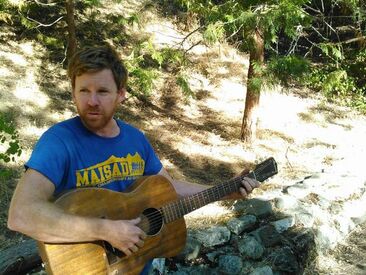
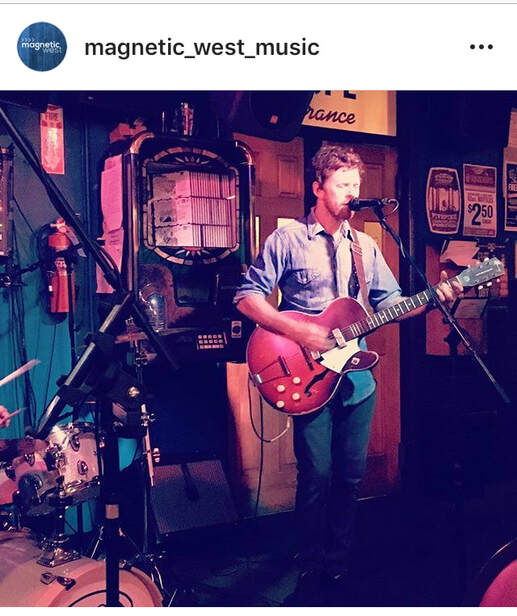
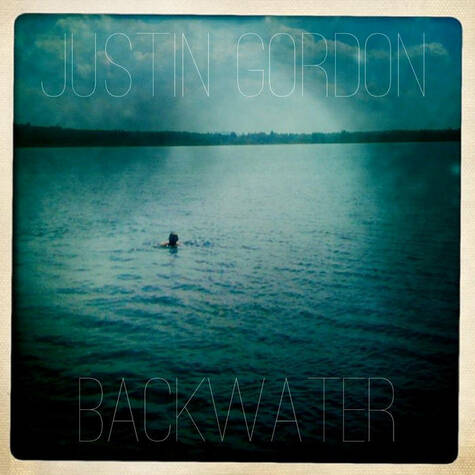
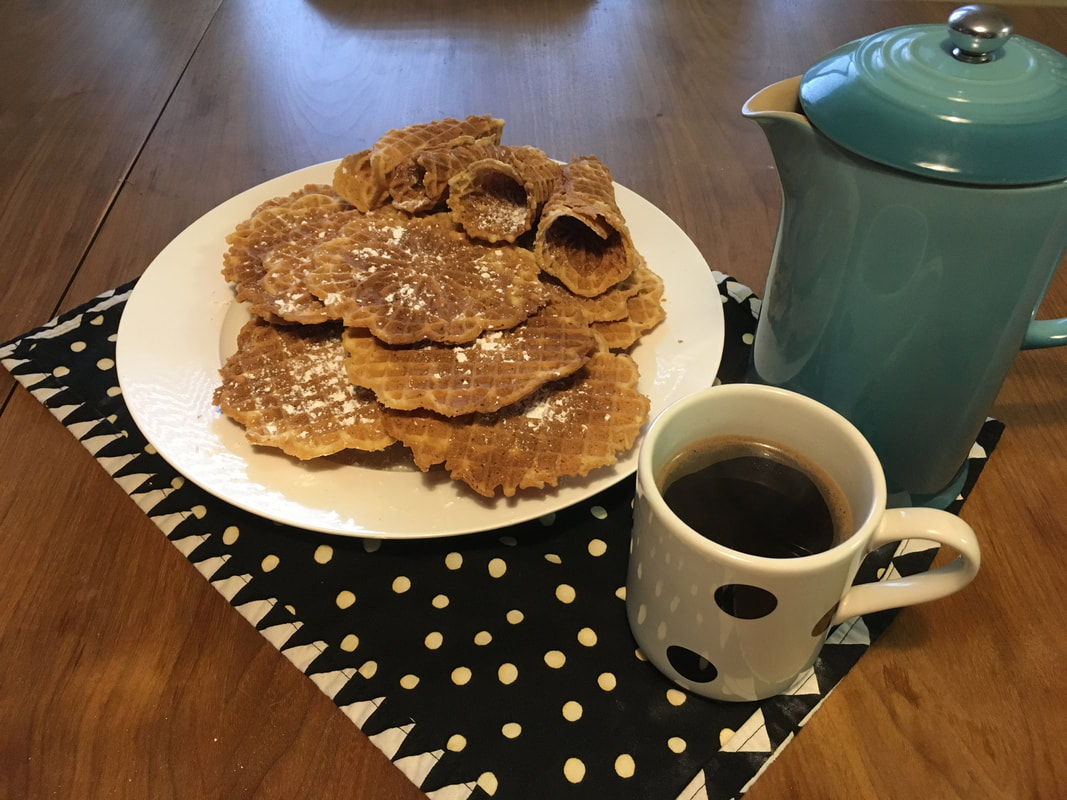

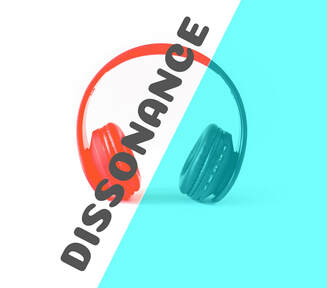





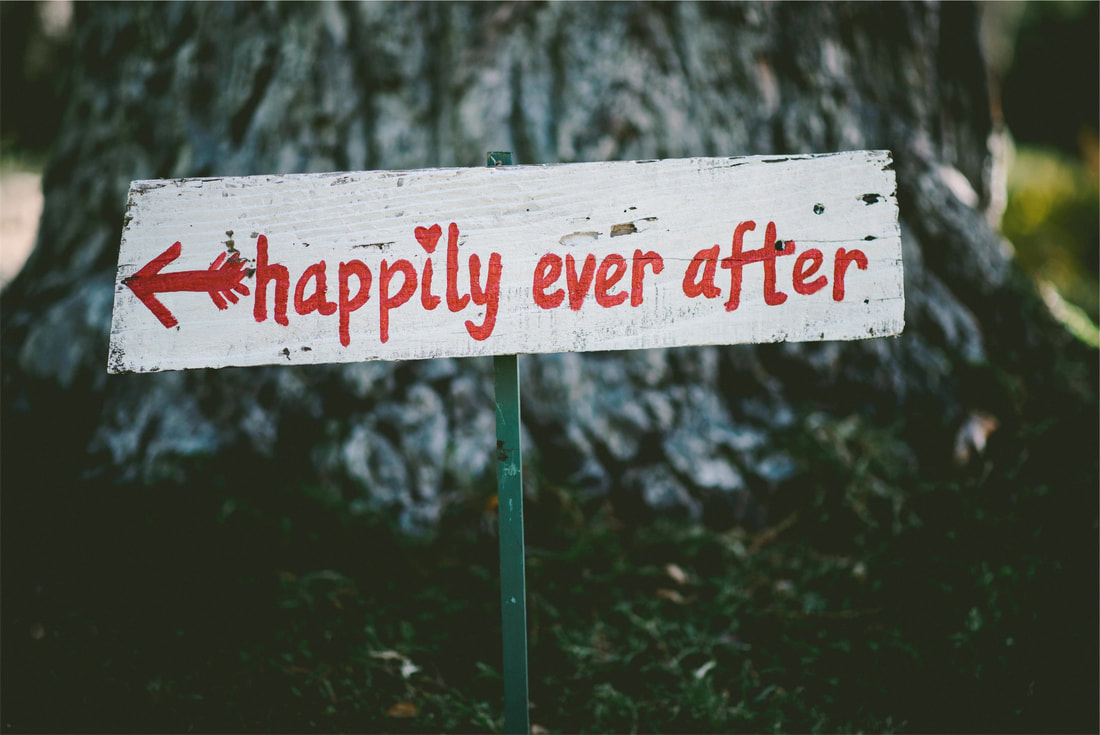
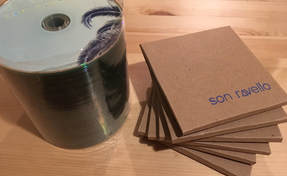
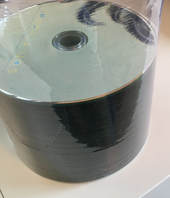
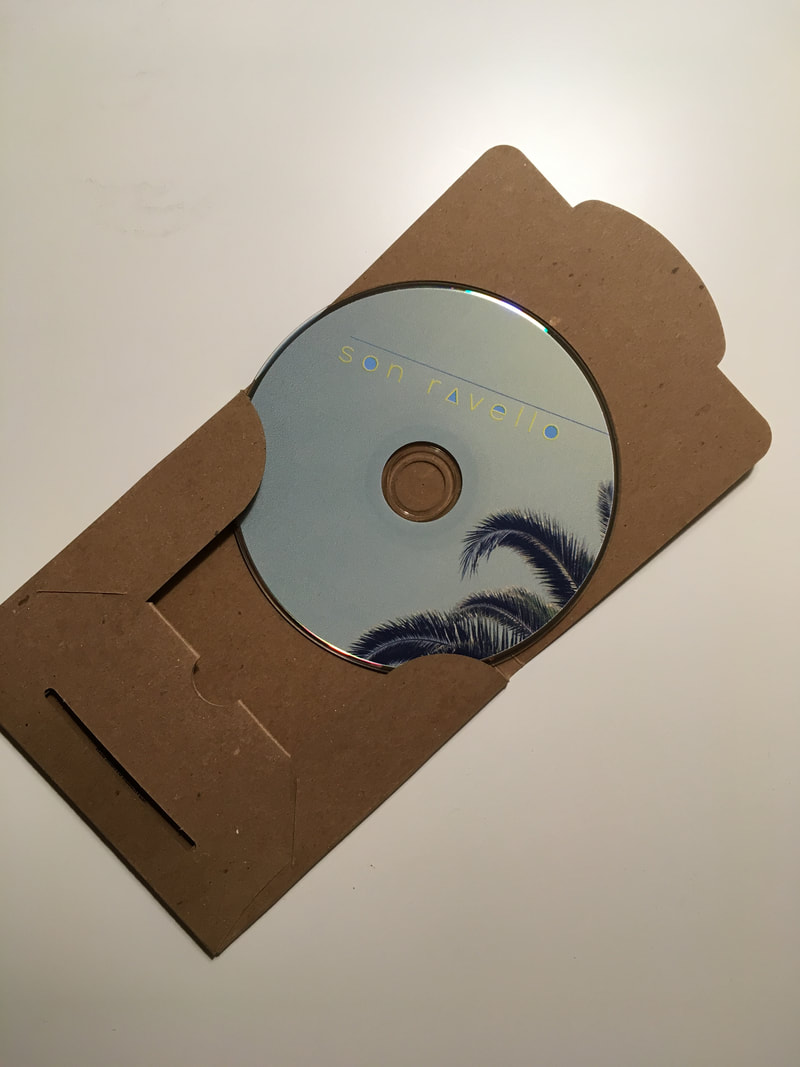
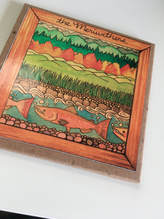
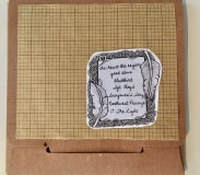
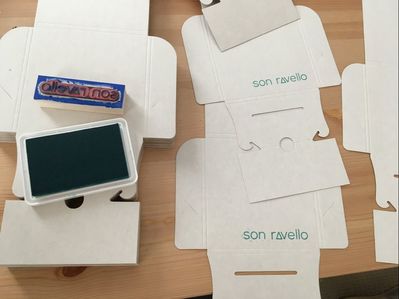
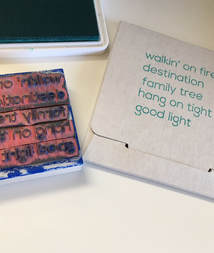
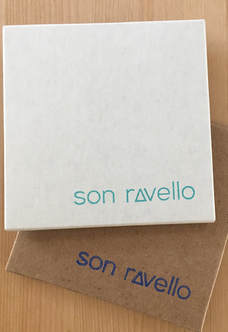




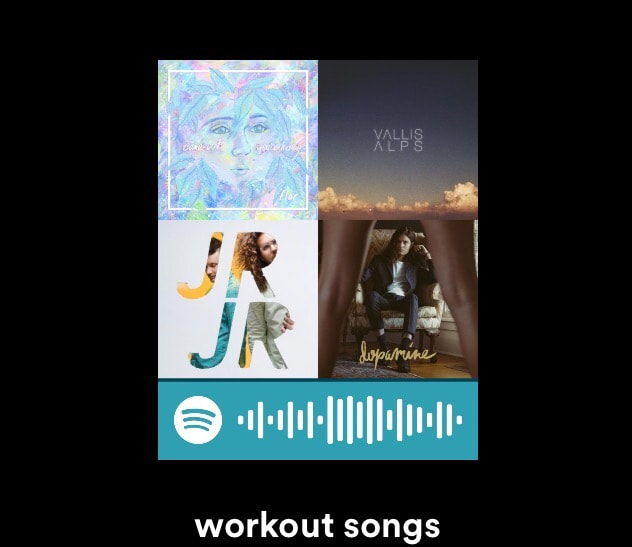


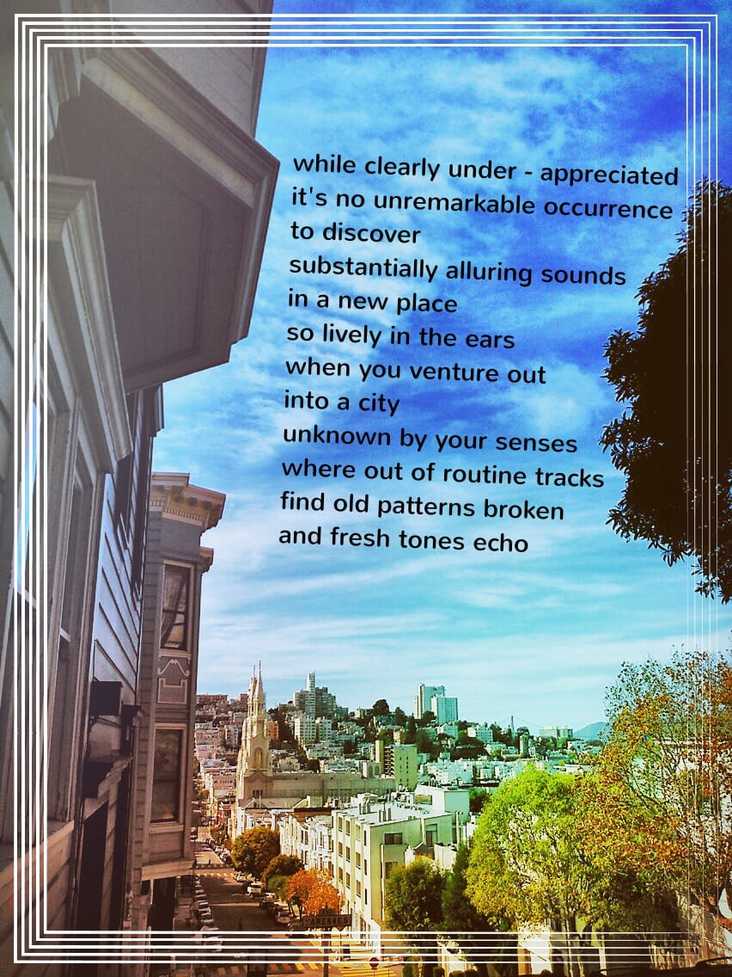






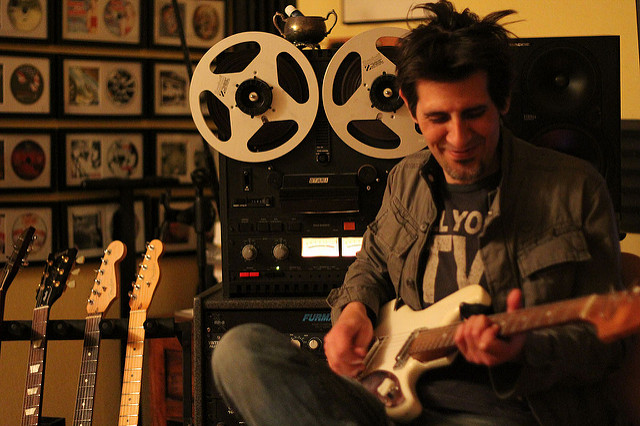
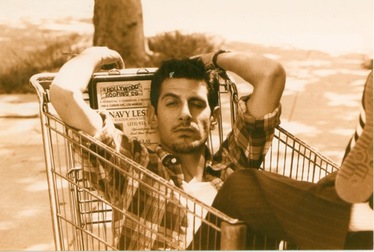






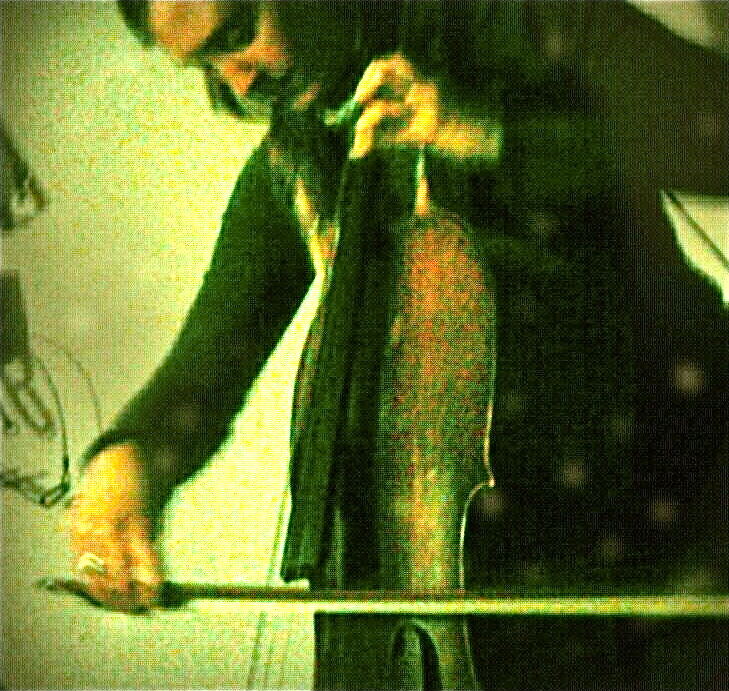

 RSS Feed
RSS Feed
